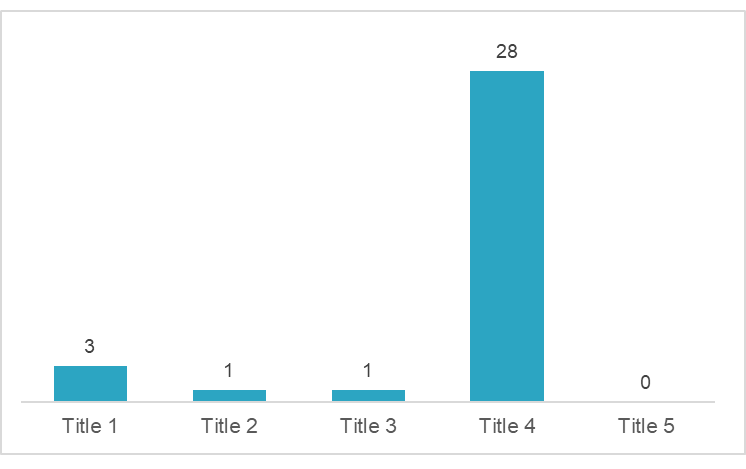2021 - Maryam (now known as Leya)
In February 2021 AMSA received notification from the Korean Register of Shipping that 11 seafarers were seeking support to be repatriated from the vessel Maryam. AMSA investigated the claim and found the ship to be unseaworthy. The ship had no electricity, no running water, no sanitary facilities and no ventilation – making conditions unbearable for seafarers onboard. This was in direct breach of the MLC and the vessel was detained on 19 February 2021.
On 28 May 2021 the onboard conditions were rectified and 10 of the original crew were finally repatriated home. The vessel was banned from Australian ports for 36 months – the longest ban ever issued by AMSA.

2021 - Western Callao
In September 2021 AMSA received a complaint regarding the underpayment of seafarers and repatriation issues. During the inspection, AMSA found evidence that employment agreements for 13 seafarers onboard had not been met, and the seafarers were collectively owed approximately AUD $40,000.
AMSA also found evidence the seafarers had been on board for over 12 months, despite ongoing commitments by the operator to repatriate them at the end of their original nine-month contracts. The vessel was detained until the crew with outstanding contracts were repatriated and evidence was received that wages had been back-paid in full. The vessel was later banned from Australian ports for six months.
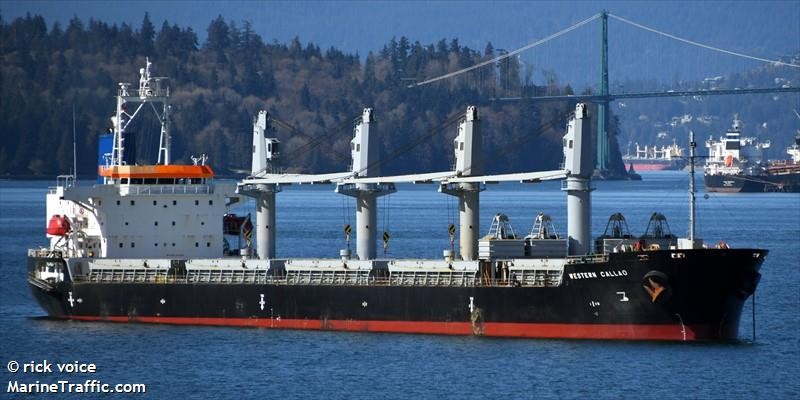
MLC data - Port State and flag State control
Port and flag State control (PSC and FSC) are conducted in accordance with the International Maritime Organization’s (IMO) requirements. Primarily, compliance activities may involve issuing deficiencies or a detention (a prohibition on the ship being allowed to depart the port).
Detentions, bans and associated public release of information, provide for an effective compliance tool to ensure corrective and timely action is undertaken by the vessel to continue to comply with regulatory requirements.
MLC compliance is one of the core elements of all PSC and FSC inspections. When investigating an MLC complaint, AMSA may conduct a follow-up inspection onboard. When a follow-up inspection confirms a MLC deficiency, the follow-up inspection becomes a PSC inspection.
In 2021, AMSA conducted a total of
2820 PSC inspections resulting in 159 detentions.
Nine of these detentions were directly related to breaches of the MLC.
Figure 16 shows the number of MLC deficiencies issued following PSC inspections. Following a decreasing trend in MLC deficiencies from 2016 to 2019, 2020 saw a spike in the number of MLC deficiencies. This is due to a marked increase in deficiencies relating to conditions of employment and seafarer employment agreements as a result of repatriation issues due to the COVID-19 pandemic. The ratio of deficiencies to inspections remained constant in 2021, reflecting a proportionate decrease in both the number of PSC inspections and MLC deficiencies.
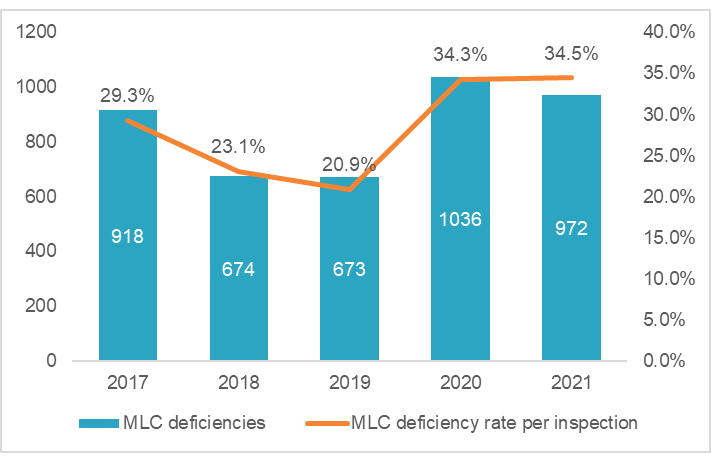
The number of detentions has been stable for the past few years, except for a small drop in 2019 (Figure 17). In 2021, AMSA exercised flexibility and worked with industry in its dealings with MLC related deficiencies during the height of the COVID-19 pandemic. Flexibility and proactive work with industry, specifically around seafarer repatriation, prevented a significant surge in detainable deficiencies relating to MLC.
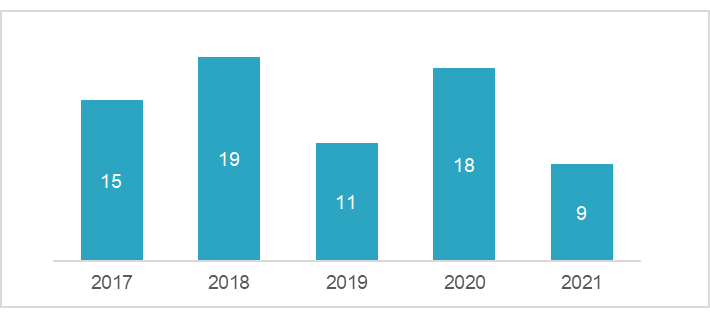
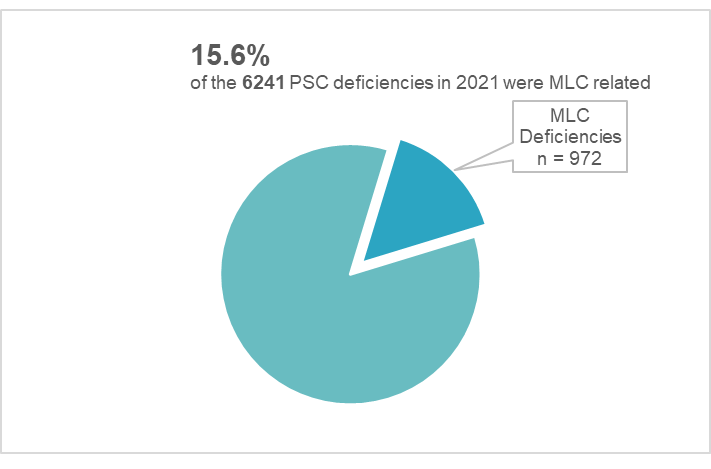
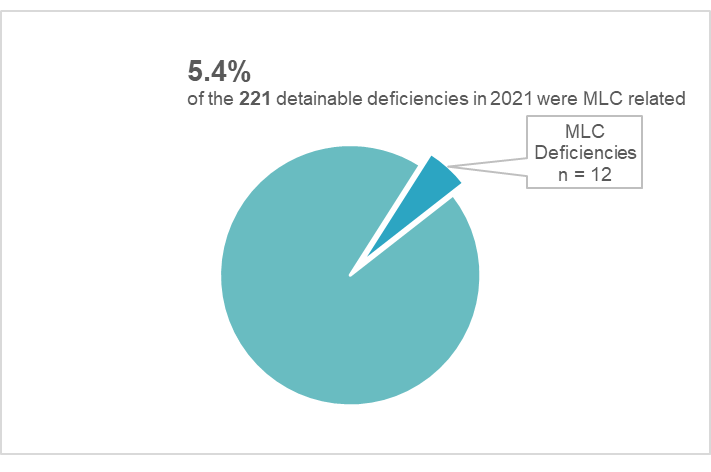
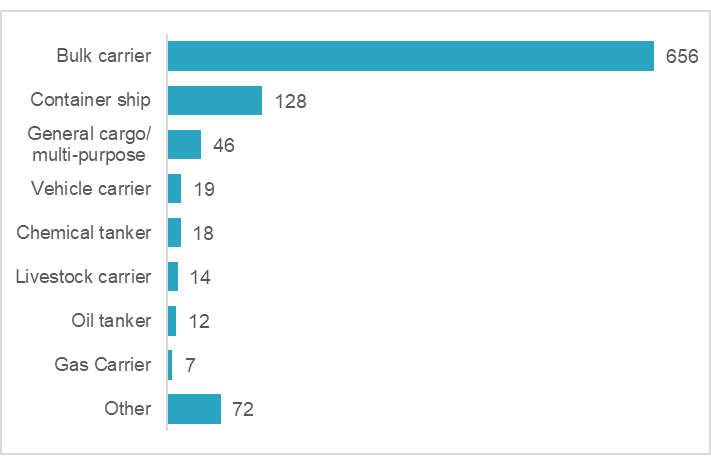
PSC deficiency data related to MLC issues
Figure 20 shows the number of PSC MLC deficiencies by MLC Title.
Regulation 4.3, dealing with health and safety protection and accident prevention, is the major deficiency item identified and is reflected in the number of Title 4 deficiencies below. While most complaints were related to Title 2 (conditions of employment, such as seafarer employment agreements and repatriation) (see Figure 6), PSC MLC deficiency data has identified that health and safety protection is the largest MLC deficiency item.
Title 1 – Minimum requirements for seafarers to work on vessels
Title 2 – Conditions of employment
Title 3 – Accommodation, recreational facilities, food and catering
Title 4 – Health protection, medical care, welfare and social security protection (including bullying and harassment)
Title 5 – Compliance and enforcement
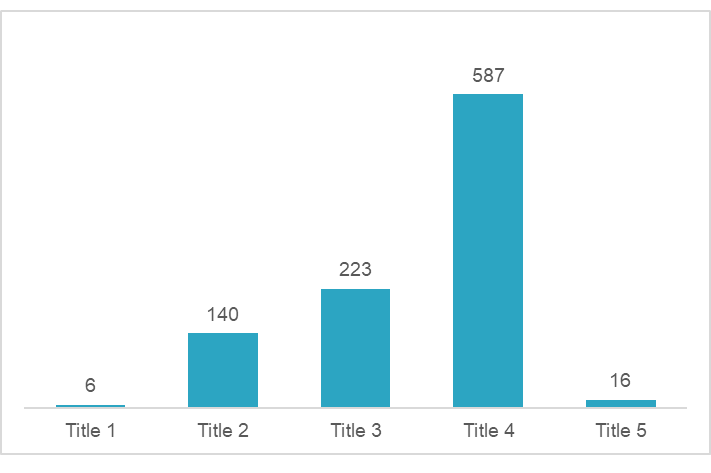
FSC deficiency data related to MLC issues
In 2021, a total of 95 initial FSC inspections were carried out. 33 MLC deficiencies were issued across a total of 23 regulated Australian vessels (18 vessels with one deficiency, three vessels with two deficiencies and two vessels with more than two deficiencies).
Figure 21 shows a breakdown of MLC deficiencies by MLC Title issued during FSC inspections on regulated Australian vessels with Title 4 - Health Protection, medical care, welfare and social security protection (including bullying and harassment) representing the highest number.
